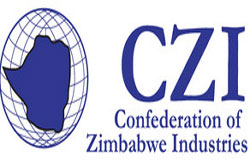2014 industry survey report out today

 Business Reporter
Business Reporter
THE 2014 Confederation of Zimbabwe Industries (CZI) manufacturing sector survey report will be presented today amid anxiety over low capacity utilisation of less than 30 percent due to prevailing economic challenges. The manufacturing sector survey analyses companies on a sector by sector basis, looking at the challenges they are facing, state of their machinery as well as the level of capacity utilisation.
“The manufacturing sector survey report will be released tomorrow October 8,” said an official who spoke on condition of anonymity from the CZI head office in Harare yesterday.
CZI started this year’s manufacturing survey in July with the body sending researchers to different parts of the country.
The release of survey results comes amid concerns by economic analysts that productivity in local companies had plummeted to less than 30 percent due to prevailing economic challenges.
“We’ll have to wait for the report from CZI but given the economic climate prevailing at the moment, capacity utilisation in the manufacturing sector might have dipped further from last year’s levels to less than 30 percent,” said an economic commentator, Peter Mhaka.
Since the liberalisation of the economy in February 2009, the manufacturing sector, which requires about $8 billion, has been grappling to improve capacity utilisation from an average of 10 percent to competitive levels.
Last year, capacity utilisation in local companies declined from an average of 44,6 percent in 2012 to 39,6 percent.
This was largely due to lack of working capital, obsolete machinery that was susceptible to frequent breakdowns, low product demand and intermittent power cuts.
It is hoped that the economic situation prevailing will improve on the back of the successful implementation of the Zimbabwe Agenda for Sustainable Socio-Economic Transformation (Zim-Asset), a five-year economic blueprint that focuses on beneficiation and value addition.
Over the years, Zimbabwe has failed to attract foreign direct investment and credit lines from multi-lateral institutions such as the International Monetary Fund and the World Bank.








Comments